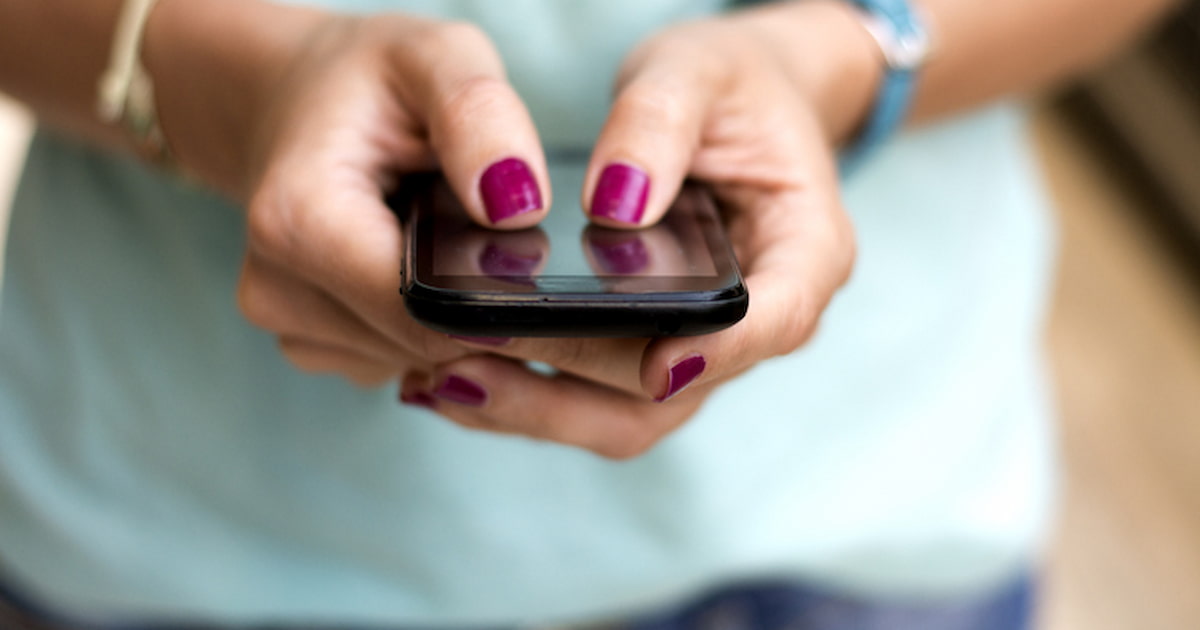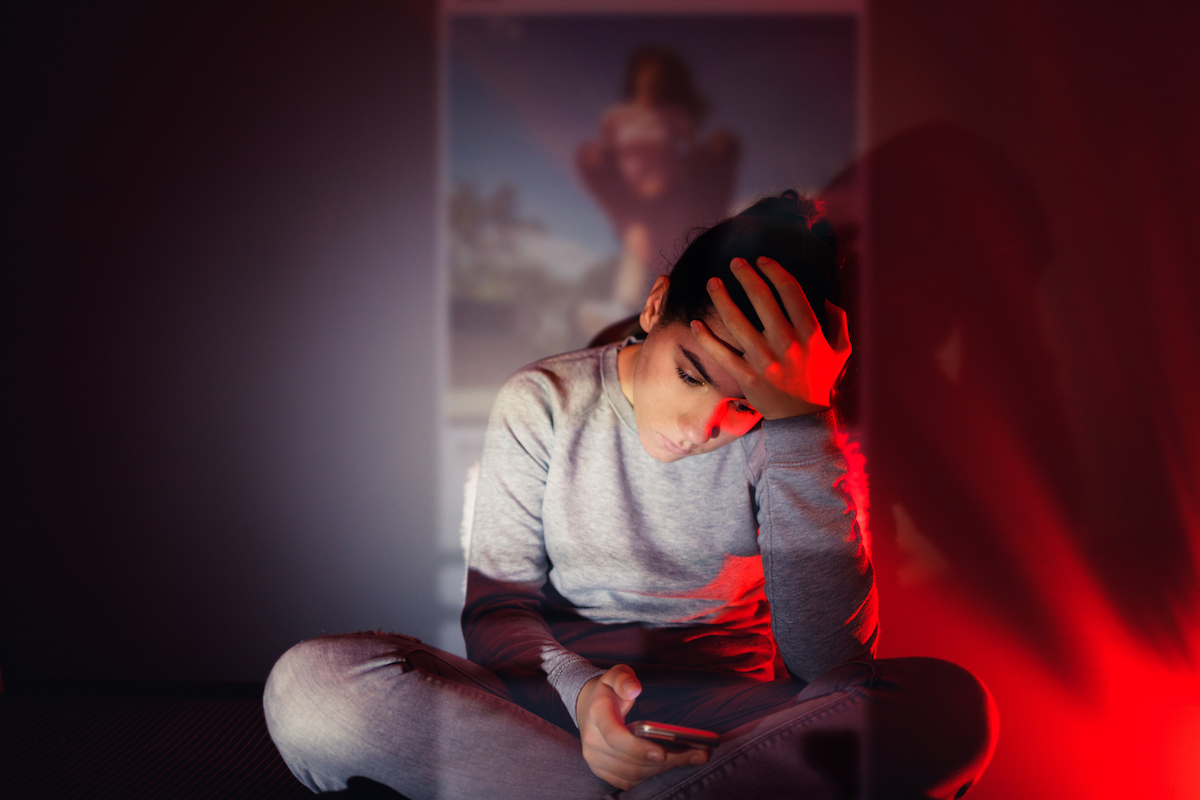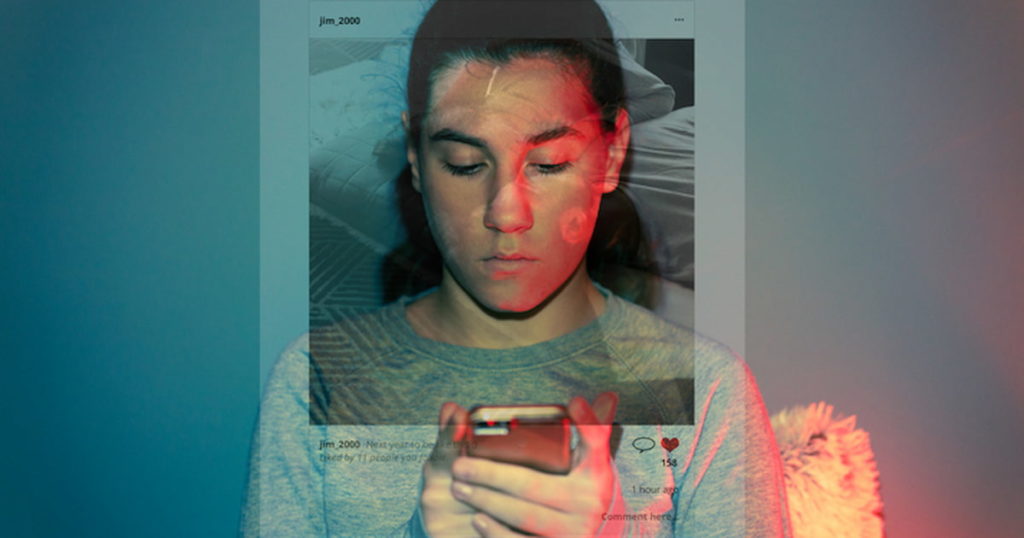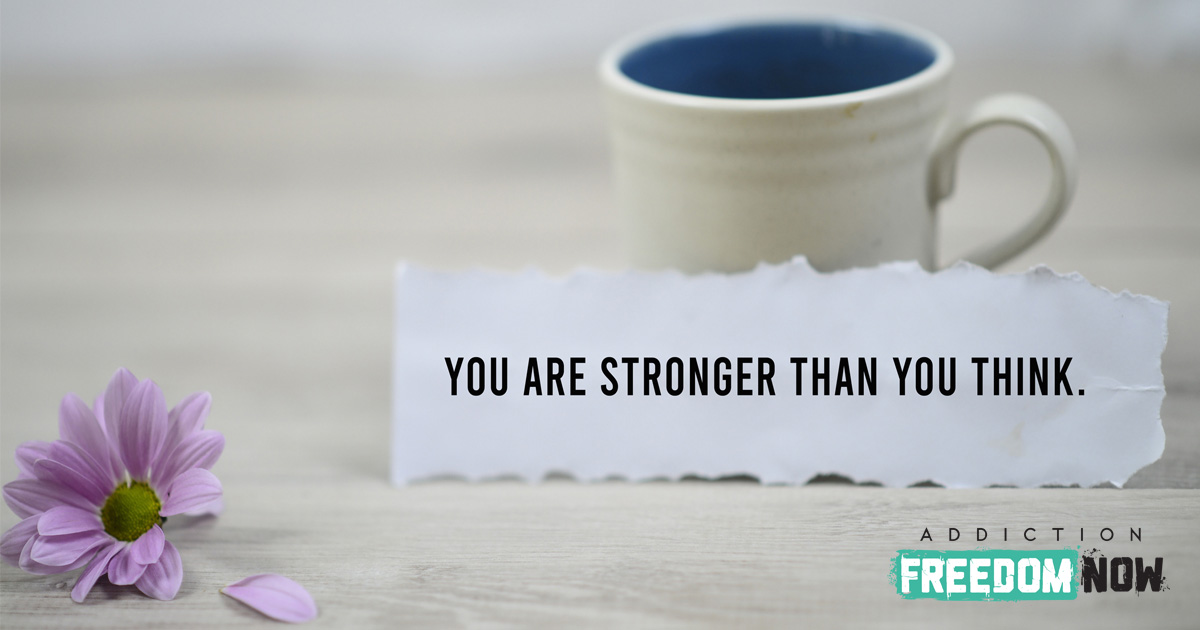While the apparent link between social media use and teen suicide isn’t new, recent statistics indicate that this connection is more significant than we initially realized. More than ever before, it is becoming obvious that there’s an alarming and unmistakable link between suicidal behavior in teens and the use of social media. Namely, teen girls seem to be the group most heavily impacted, even more than teen boys.
Although social media is not solely to blame for suicidal tendencies in teenagers, it does seem to contribute to the rising rates of suicide reported over the past decade. To effectively combat teen suicide and suicide attempts, it is crucial to understand the unique ways social media impacts teenagers and what parents can do to help alleviate the risk of experiencing such a tragedy in their own families.
The Current Rate of Suicide in Teens
In the United States, the rates of teen suicide are concerning, and they are only becoming more worrisome as time goes on. Suicide ranks as the second leading cause of death in teens, followed by unintentional injury [1]cdc.gov https://www.cdc.gov/. Teen suicide rates haven’t always been this high, but they have been consistently increasing.
Between 2000 and 2007, suicide rates for individuals between the ages of 10 and 24 remained stable in the US, but from 2007 to 2017, the rate of suicide for this age group rose by around 56%.[2]cdc.gov https://www.cdc.gov/nchs/data/databriefs/db352-h.pdf As of 2018, the suicide rate among this population has risen by an additional 1.4% compared to the year prior.
Although these numbers indicate a serious public health concern, it is still worth noting that suicide isn’t a common issue in teens. Nevertheless, its prominence is rising, and this is something we must promptly address and resolve.
Why Are Teen Suicide Rates Rising?
Longitudinal research on the topic of teen suicide and social media exposure has been extremely limited over the years, but a recent study has shed light on this connection. At the beginning of 2021, researchers published a pivotal study over the course of ten years to learn more about the link between social media and suicide in teens.
Over the course of a decade, the study followed a group of 500 adolescents aged 12 to 15 years old. Researchers discovered that for teen girls with a high rate of social media use in early adolescence (followed by a significant increase over time), social media use was the variable most predictive of suicide in early and emerging adulthood.[3]Coyne, S.M., Hurst, J.L., Dyer, W.J. et al. Suicide Risk in Emerging Adulthood: Associations with Screen Time over 10 years. J Youth Adolescence 50, 2324–2338 (2021). … Continue reading
Although the rates rose less for teen boys, there were still some notable findings. For instance, video game use has been associated with an increased risk of suicide when cyberbullying becomes involved in the experience.3 Even so, suicidality in teenagers is a complex issue, and it isn’t fair to boil it down solely to the influence of social media. In addition, certain factors like the rise of media literacy may nullify some of the damage done by social media use.
It is also important to consider the context when examining social media use by adolescents. For instance, while some components of social media may take a negative toll on a teen’s mental health, others could create the opposite effect.[4]Karim, F., Oyewande, A. A., Abdalla, L. F., Chaudhry Ehsanullah, R., & Khan, S. (2020). Social Media Use and Its Connection to Mental Health: A Systematic Review. Cureus, 12(6), e8627. … Continue reading Social media is a powerful tool for communication amongst teens and young adults, and this sense of social inclusion and interaction can be a positive influence in certain cases.
Social Media and Teen Girls’ Suicide Risk

As touched upon earlier, evidence suggests that the link between social media and rising rates of teen suicide is most prominent in girls rather than in boys.[5]Sedgwick, R., Epstein, S., Dutta, R., & Ougrin, D. (2019). Social media, internet use and suicide attempts in adolescents. Current opinion in psychiatry, 32(6), 534–541. … Continue reading Returning to the 10-year study mentioned previously, just over half of the 500 total participants were female, or around 51%. Over the course of the study, all participants were asked a series of questions intended to gauge suicide risk.
The survey included questions relating to the frequency of suicidal thoughts, threats of suicide, past suicide attempts, and the likelihood of death by suicide. Participant scores ranged from 3 to 18 in response to these questions. Any score higher than six indicated that the adolescent had reached a clinical level of suicide risk.
Through these surveys, it was discovered that suicide risk in adolescent girls increased if:
- They began using social media at an early age, namely below the age of 14.
- They used social media and/or watched TV for a minimum of 2 to 3 hours each day on average.
- Their rate of social media usage increased over time.
Based on these surveys, teen boys appear to be less affected by social media in terms of suicidal ideation or behaviors. It is possible that the typical social behaviors of teen girls might have contributed to this increase. Girls tend to be more attuned to their social relationships when compared to their male peers.[6]Rose, A. J., & Rudolph, K. D. (2006). A review of sex differences in peer relationship processes: potential trade-offs for the emotional and behavioral development of girls and boys. … Continue reading
This often leads young girls to be more harshly impacted by interpersonal conflicts or stressors, which are commonly encountered on social media. By this rationale, when teen girls experience cyberbullying, self-comparison, and fear of missing out on social media, this has a more significant impact on their mental health than what is seen among boys.
The Problem with Social Media: Comparison and Self-Esteem
Although there are many positive aspects of social media – including aspects that positively affect teens’ mental health, some prevailing issues require careful attention. Each of these problems has the potential to damage an adolescent’s mental wellbeing and possibly result in mental health problems in the future.
On platforms such as Instagram, many teenagers run the risk of feeling judged by their peers, and the number of “likes” that adolescents receive (especially compared to others) can take a toll of its own.[7]Carpenter, J. P., Morrison, S. A., Craft, M., & Lee, M. (2020). How and why are educators using Instagram?. Teaching and teacher education, 96, 103149. https://doi.org/10.1016/j.tate.2020.103149 The fear of missing out is another negative repercussion of frequent social media use by adolescents. For instance, if a teen sees that their friends are posting about activities that they did without them (especially if it’s a group of friends), then this can lead to the fear of missing out, as well as an overall negative effect on the original adolescent’s confidence and self-esteem.
Viewed as a whole, the act of comparison on social media can be one of the biggest problems of social media use. When teens are bombarded with images of attractive celebrities and other successful individuals, it’s not surprising that the teen may end up making comparisons, whether they intend to or not. In a similar vein, seeing individuals with larger follower counts is another act of comparison that can damage an adolescent’s self-esteem.
Preventing Teen Suicide in the Social Media Era

Given the rising rates of adolescent suicide, it’s urgent that intervention occurs and preventative actions are taken. If you are the parent of a teen, here are a few actions you can take to minimize your child’s risk of suicide:
If You Suspect That Your Teen is Depressed or Anxious, Don’t Overlook It
It can be surprisingly easy to recognize indicators of depression or anxiety in adolescents without realizing just how critical it is to intervene – and how big of a difference this intervention can have on their mental health.
If you suspect that your teen is depressed and you’ve been noticing these symptoms for several weeks, then let them know that you’re willing to listen and help. Not all bad moods in teens are phases that will pass on their own. Sometimes, they are showing signs of a serious mental illness, which will only worsen as time goes on without a proper diagnosis and treatment.
Even if your teen isn’t ready to talk, let them know that you recognize what they’re going through and that you’re always available to listen. In general, communication is one of the most valuable ways a parent can reduce their child’s risk of suicide.[8]Stone, D. M., & Crosby, A. E. (2014). Suicide Prevention. American journal of lifestyle medicine, 8(6), 404–420. https://doi.org/10.1177/1559827614551130 Even if your teen isn’t communicating with you, keep an eye on their behaviors and actions, and step up to the mantle if you need to. Try to stay on the same page with your teen about how they’re feeling.
Most importantly, listen to your instincts. If you think something is wrong, don’t be afraid to reach out, even if your adolescent isn’t going out of their way to explicitly tell you that they’re feeling depressed.
Don’t Put Off Seeking Professional Help
If your teen is experiencing mental health issues, you cannot effectively handle this situation on your own, so you must seek out counseling or professional help on their behalf. There is no reason to wait until a mental health concern has gotten severe before turning to a therapist or a psychiatrist. In fact, the earlier you take this kind of action, the better. Even if you don’t believe that your child is at immediate risk of self-harm or suicide, receiving therapy to work through their thoughts and feelings can still be monumental in achieving better outcomes.[9]Amitai, M., & Apter, A. (2012). Social aspects of suicidal behavior and prevention in early life: a review. International journal of environmental research and public health, 9(3), 985–994. … Continue reading
If you believe that your teen is actively at risk of suicide or self-harm, it’s best to take more urgent action. For example, this could involve taking your adolescent to the emergency room or getting in touch with a local mental health crisis support service. However, early intervention can be incredibly helpful in preventing your teen’s depression from reaching this point, so don’t wait until they experience a crisis before getting them the support they need.[10]Colizzi, M., Lasalvia, A., & Ruggeri, M. (2020). Prevention and early intervention in youth mental health: is it time for a multidisciplinary and trans-diagnostic model for care?. International … Continue reading
Help Your Teen Develop a Healthier Relationship with Social Media

Seeing as social media has become so deeply intertwined with the day-to-day lives of adolescents, it just isn’t reasonable to expect them to stay away from these platforms entirely. There’s not much we can do to quell the connection between teenagers and social media.
Instead of actively discouraging the use of social media, encourage your teen to develop healthier habits and a more positive outlook when it comes to how they see and interact with these platforms. In part, this could mean setting limits on how much time your adolescent is spending on social media each day.
While it’s true that just about everyone could benefit from building a healthier relationship with social media, this is even more important for young people. Discourage your teen from comparing themselves to others and make time to communicate openly with them about the impact social media may be having on their self-esteem. You can also encourage your child to put their mental health first and recommend that they step away from social media for a while if they see something that’s upsetting to them.
Support on Social Media – National Suicide Prevention Lifeline
To ensure your teen can access the mental health support they need when you’re not around, display the phone number for the National Suicide Prevention Lifeline in an area of your home where your teen is most likely to see it, such as on the fridge. This national network consists of more than 180 local crisis centers that provide free, confidential, 24/7 support to individuals experiencing a mental health crisis.
The number for the National Suicide Prevention Lifeline is 1-800-273-8255.
Help Prevent Teen Suicide

As the worrying statistics show, the rate of adolescent suicide in the United States is on the rise. The best way to prevent suicide is to intervene before it happens. If your teen needs counseling or other mental health services, coordinate a consultation for them without judgment.
We are a community of recovery professionals and advocates. Our goal is to share recovery experiences, trials, and triumphs in a safe environment where people who still struggle are empowered.
References
| ↑1 | cdc.gov https://www.cdc.gov/ |
|---|---|
| ↑2 | cdc.gov https://www.cdc.gov/nchs/data/databriefs/db352-h.pdf |
| ↑3 | Coyne, S.M., Hurst, J.L., Dyer, W.J. et al. Suicide Risk in Emerging Adulthood: Associations with Screen Time over 10 years. J Youth Adolescence 50, 2324–2338 (2021). https://doi.org/10.1007/s10964-020-01389-6 |
| ↑4 | Karim, F., Oyewande, A. A., Abdalla, L. F., Chaudhry Ehsanullah, R., & Khan, S. (2020). Social Media Use and Its Connection to Mental Health: A Systematic Review. Cureus, 12(6), e8627. https://doi.org/10.7759/cureus.8627 |
| ↑5 | Sedgwick, R., Epstein, S., Dutta, R., & Ougrin, D. (2019). Social media, internet use and suicide attempts in adolescents. Current opinion in psychiatry, 32(6), 534–541. https://doi.org/10.1097/YCO.0000000000000547 |
| ↑6 | Rose, A. J., & Rudolph, K. D. (2006). A review of sex differences in peer relationship processes: potential trade-offs for the emotional and behavioral development of girls and boys. Psychological bulletin, 132(1), 98–131. https://doi.org/10.1037/0033-2909.132.1.98 |
| ↑7 | Carpenter, J. P., Morrison, S. A., Craft, M., & Lee, M. (2020). How and why are educators using Instagram?. Teaching and teacher education, 96, 103149. https://doi.org/10.1016/j.tate.2020.103149 |
| ↑8 | Stone, D. M., & Crosby, A. E. (2014). Suicide Prevention. American journal of lifestyle medicine, 8(6), 404–420. https://doi.org/10.1177/1559827614551130 |
| ↑9 | Amitai, M., & Apter, A. (2012). Social aspects of suicidal behavior and prevention in early life: a review. International journal of environmental research and public health, 9(3), 985–994. https://doi.org/10.3390/ijerph9030985 |
| ↑10 | Colizzi, M., Lasalvia, A., & Ruggeri, M. (2020). Prevention and early intervention in youth mental health: is it time for a multidisciplinary and trans-diagnostic model for care?. International journal of mental health systems, 14, 23. https://doi.org/10.1186/s13033-020-00356-9 |




